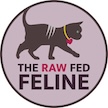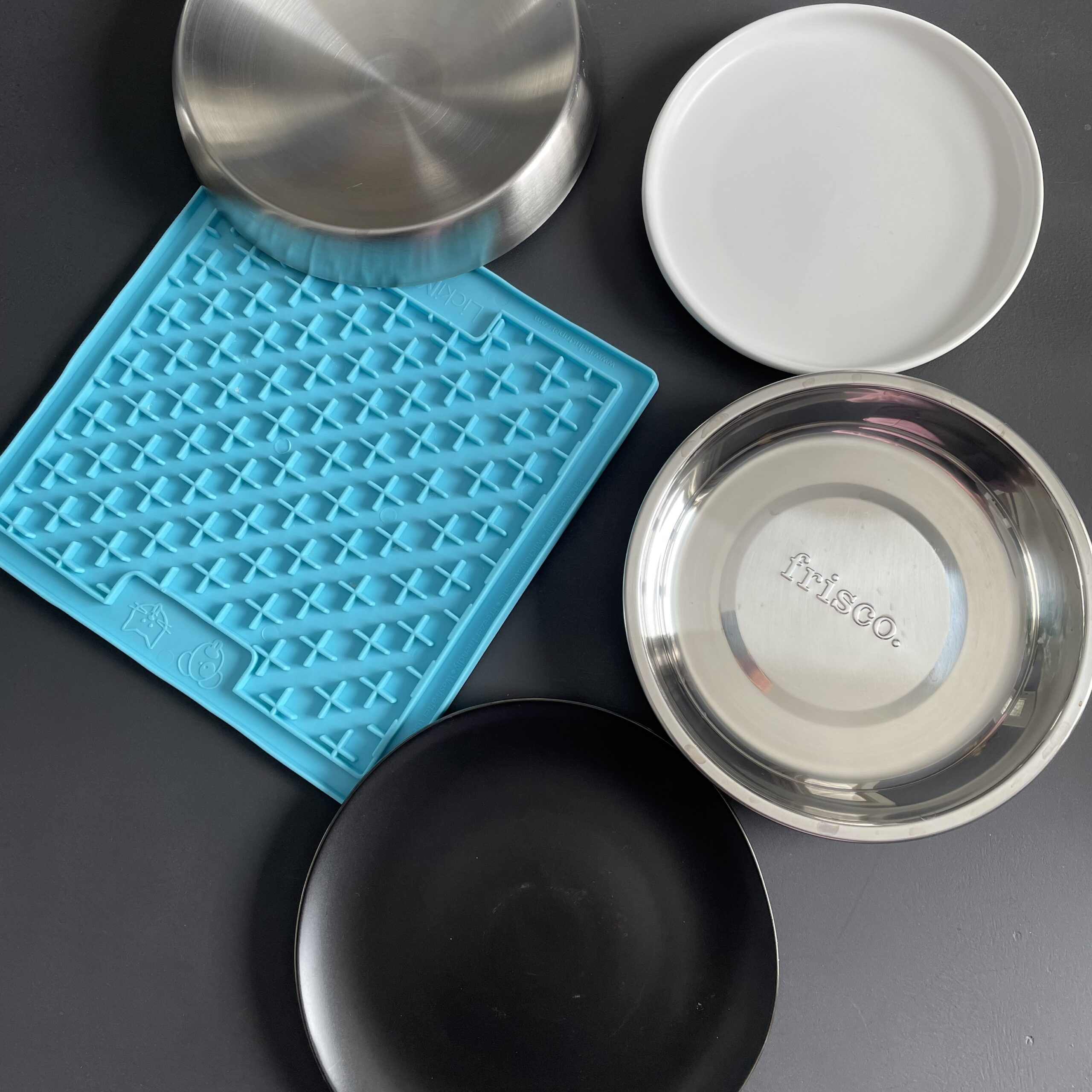We put a lot of time and energy into thinking about what to feed our cats. But we also want to consider how we feed them. The how of feeding includes how often, the location and environment, what dish is used, and what role our emotions can play at feeding time. All of these things can influence our cats’ overall experience with eating.
How often
Let’s take a look at each aspect of how we feed our cats. First, how often. Feral cats eat many small meals throughout a 24 hour period, typically 8-12 meals of whole prey. Now, our more pampered indoor cats do not need to expend energy hunting their food, so they don’t need to eat quite as often or as much. (Here is information about how much to feed your cat.) Free feeding is a common practice with cats, but this practice can easily lead to obesity. Cats are generally very good at regulating their food intake to match their energy needs. But when offered food 24/7, this can override their natural ability to self-regulate. With rates of obesity in cats in the US climbing, free feeding is not recommended.
cats are not grazing animals or dogs
Cats are not grazers like horses, cows, goats, and other ruminant animals. Grazers need to nibble on food all day long. Cats are hunters. Hunters go through periods of eating and being hungry. The feeling of hunger signals that it’s time to go hunt. This internal communication system gets messed up when food is available 24/7.
On the other extreme is only feeding 1-2 meals daily. Eating 1-2 meals is much more compatible with how dogs are designed to eat. Dogs are able to eat larger meals. Gorging and fasting are more common with canids’ eating patterns. Cats are not designed for fasting. When cats have to wait a long time in between meals they can experience “hunger pukes.” Hunger pukes happen when bile or acid builds up in the cat’s stomach. If a cat goes too long without eating, especially an overweight cat, hepatic lipidosis can occur, which is a serious medical emergency.
small, more frequent meals
Cats physically have small stomachs. This is another reason why they eat small meals. Their stomachs cannot expand to eat a huge amount at one time. Offering smaller meals is therefore more compatible with the physical size of their stomachs.
Because cats need to “eat their water” (see this post for information about the importance of feeding a moisture rich diet), eating several small meals throughout the day increases their overall water intake and helps keep the urinary system properly flushed.
So if free feeding is not a good idea and neither is only feeding 1-2 meals, how often should we feed our cats? For adult cats, 3-4 portioned meals daily is generally advised. Many people feed a meal at breakfast, after work, and before bed. The meals do not have to be evenly spaced apart. If you are feeding kittens, their stomachs are even smaller and they will need even more frequent meals, anywhere from 5-8 meals daily, depending on age.
Location and environment
Now let’s consider location as another important aspect of how we feed our cats. Cats tend to prefer a calm, quiet space to eat their food. Feeding your cat at a busy time of day in your household in heavy traffic areas or with boisterous activity going on is not ideal. For some cats, high energy spaces and loud noises will put them off from eating altogether.
In nature, most cats (lions being an exception) eat alone. For this reason, cats often prefer to have some distance between other cats or household pets as they eat. You can use vertical and horizontal spaces to put your cat’s dish on to create more space (think about how a feral cat will take its meal under a bush to eat or a leopard will climb a tree with its kill). Providing adequate space in a multi-cat household can be very important, especially if one cat is more timid or eats more slowly than the others.
Choose the dish wisely
You want to serve your cat’s food in a dish that is not too narrow or deep as that can cause uncomfortable sensations for their whiskers, referred to as “whisker stress” or “whisker fatigue.” Sometimes a seemingly picky cat is rejecting the food bowl, not necessarily the food. A flat plate can easily be used or there are several wide and flatter dishes on the market designed with cats’ whiskers in mind.
Of course, you want any dish you use to be easy to clean and to avoid plastic as scratched plastic can harbor bacteria. Glass, stainless steel, and ceramic dishes are popular options. Silicone mats are another option. Those are particularly nice for fast eaters. It’s important to wash your raw fed cat’s food dish after every meal for sanitary reasons. Cats are clean animals. They prefer a clean area to eat and for that area to be separate from their litter box.
Opportunity for connection
As any cat guardian knows, cats are incredibly sensitive animals. They are very tuned into their person’s emotional states. In this way, our emotions can impact our cat’s eating experience. Especially when introducing new foods, it’s imperative that we manage our stress about that process. We don’t want to cause our cats distress while they are eating as they may start to have negative associations with that food and/or with mealtime, which could impact their acceptance of the food. Try to be present with a calm demeanor when feeding your cat.
Since our cats do not need to hunt their food and instead rely upon us for sustenance, feeding time can be an important opportunity for interaction and connection between you and your cat. I know that I can’t be the only one who is having a whole dialogue with my cat around mealtimes, right? Providing nourishment for your cat is an act of love and an opportunity to connect in a meaningful and positive way that strengthens your relationship with one another. So remember, it’s not only what we feed our cats, but how we feed them, too!


